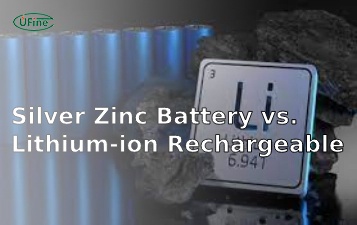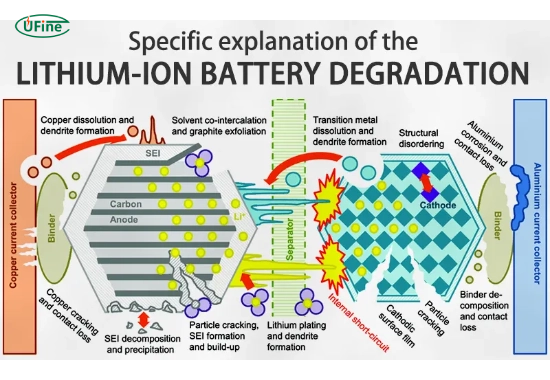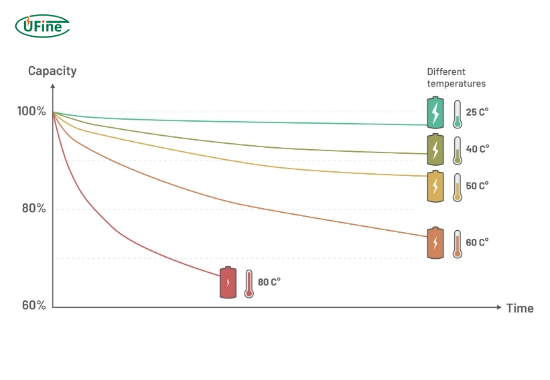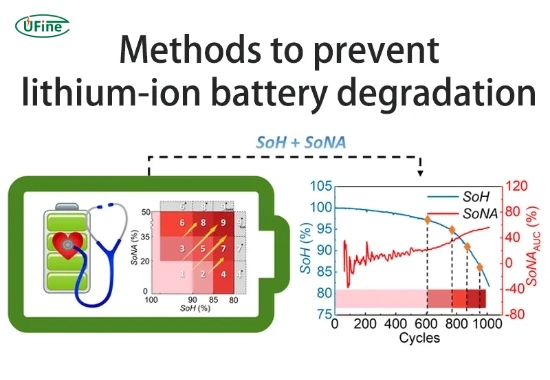
- Part 1. What is battery degradation?
- Part 2. How does battery chemistry affect degradation?
- Part 3. Can battery degradation be reversed?
- Part 4. What are some techniques for maintaining battery health?
- Part 5. What are the latest advancements in reversing battery degradation?
- Part 6. What role does user behavior play in battery lifespan?
- Part 7. Are there any myths about reversing battery degradation?
- Part 8. How do manufacturers address battery degradation?
- Part 9. FAQs
Can battery degradation be reversed? This question is becoming increasingly important as our reliance on batteries grows, especially in electric vehicles and portable electronics. Battery degradation refers to the gradual loss of a battery’s ability to hold a charge over time. Understanding this process is crucial for anyone who uses devices powered by batteries. In this article, we will explore battery degradation, the factors that contribute to it, and the latest research aimed at reversing or mitigating its effects.
Part 1. What is battery degradation?
Battery degradation is the decline in a battery’s performance and capacity over time. This decline can happen for several reasons:
- Chemical reactions: Chemical reactions occur within a battery’s cells every time it charges and discharges. Over time, these reactions can create unwanted compounds that reduce the battery’s efficiency.
- Physical changes: Repeated charging and discharging cycles can cause the materials inside a battery to change structurally. This can lead to the formation of dendrites—tiny, needle-like structures that can cause short circuits.
- Temperature effects: Extreme temperatures can accelerate degradation. High temperatures can speed up chemical reactions, while low temperatures can slow down ion movement within the battery.
Understanding these factors helps us grasp why batteries degrade and what we might do to slow down this process.
Part 2. How does battery chemistry affect degradation?
The chemistry of a battery significantly influences its lifespan and performance. Lithium-ion batteries are commonly used in many devices today, but they are particularly vulnerable to degradation due to their reliance on lithium ions moving between the anode and cathode.
- Lithium-ion movement: During charging, lithium ions move from the cathode to the anode; during discharging, they return. Over time, some lithium ions can become trapped in inactive regions within the battery. This trapping leads to a loss of capacity because those ions cannot participate in charging and discharging.
- Electrolyte breakdown: The electrolytes in lithium-ion batteries can degrade over time due to chemical reactions with other materials in the cell. This breakdown reduces conductivity and increases internal resistance, further impacting performance.
By focusing on these chemical processes, researchers aim to find ways to enhance battery longevity and performance.
Part 3. Can battery degradation be reversed?
While complete reversal of battery degradation may not be possible due to irreversible chemical changes, recent research has shown promising methods for partially restoring capacity:
- Reconnecting inactive lithium: A Stanford University study demonstrated that isolated lithium within a battery could be mobilized back toward the electrodes through specific charging protocols. This process could potentially restore up to 30% of a battery’s lost capacity.
- Optimizing charging techniques: Users have reported improved battery performance by adjusting their charging habits—such as varying charge levels or occasionally performing complete charge cycles—which may help balance cell activity and mitigate further degradation.
These findings suggest that while we cannot entirely reverse degradation, we can take steps to optimize performance and extend battery life.
Battery Reconditioning Explained: A Comprehensive Guide
Part 4. What are some techniques for maintaining battery health?
To prolong battery life and minimize degradation, consider implementing these techniques:
- Avoid extreme temperatures: Keep batteries at moderate temperatures whenever possible. Avoid leaving devices in hot cars or exposing them to freezing conditions. High heat can cause faster chemical reactions that lead to degradation.
- Charge wisely: Instead of charging your device 100% every time, consider stopping at around 80% daily. This practice reduces stress on the battery and helps maintain its health over time.
- Regular cycling: Occasionally, allow your battery to discharge fully before recharging it. This practice helps recalibrate the battery management system (BMS) and may improve accuracy in capacity readings.
By adopting these practices, users can help maintain their batteries’ health and extend their lifespan.
Part 5. What are the latest advancements in reversing battery degradation?
Recent advancements in battery technology have opened new avenues for addressing degradation:
- Fast discharging techniques: Researchers have found that a rapid discharge step after charging can help move inactive lithium back toward active regions within the cell. This technique shows promise for restoring some lost capacity.
- New materials: Innovations in materials science are leading to the development of more robust electrodes that resist dendrite formation and other forms of degradation. These new materials could significantly improve overall battery lifespan.
- Battery management systems (BMS): Enhanced BMS technology allows for better monitoring and management of charge cycles, which can help extend overall lifespan by optimizing usage patterns based on real-time data.
These advancements indicate a bright future for battery technology as researchers continue to explore ways to enhance performance and longevity.
Part 6. What role does user behavior play in battery lifespan?
User behavior significantly impacts how quickly a battery degrades:
- Charging habits: Frequent fast charging or leaving devices plugged in overnight can accelerate battery wear. It’s best to charge your device when it reaches around 20% instead of letting it drain entirely or keeping it plugged in all night.
- Usage patterns: High-demand applications that require constant power draw can also contribute to faster degradation rates. If you frequently use power-hungry apps or features, consider reducing their usage when possible.
By being mindful of how we use our devices, we can help extend their lifespan and maintain optimal performance over time.
Part 7. Are there any myths about reversing battery degradation?
Several misconceptions exist regarding the reversal of battery degradation:
Myth 1: You can completely restore a degraded battery’s original capacity.
- Reality: While some methods may recover partial capacity, complete restoration is generally not feasible due to irreversible cell chemical changes.
Myth 2: All batteries degrade at the same rate.
- Reality: Different chemistries and usage patterns lead to varying degradation rates across different types of batteries. Lithium-ion batteries may degrade differently than nickel-cadmium or lead-acid batteries.
Understanding these myths helps set realistic expectations about what is possible with current technology and practices.
Part 8. How do manufacturers address battery degradation?
Manufacturers are increasingly aware of consumer concerns regarding battery lifespan:
- Warranty policies: Many companies now offer warranties that cover significant capacity loss within a specified period. This gives consumers peace of mind, knowing the battery protects them against premature failure.
- Software updates: Manufacturers often release software updates that optimize charging algorithms based on user behavior data collected from devices. These updates help improve overall efficiency and longevity by adjusting how devices charge batteries under different conditions.
These efforts reflect a commitment to improving user experience by addressing battery health concerns while promoting responsible consumption practices.
Part 9. FAQs
-
Can I reverse entirely my degraded lithium-ion battery?
While some methods may recover partial capacity, complete reversal is generally impossible due to irreversible cell chemical changes. -
What are some signs my battery is degrading?
Common signs include reduced runtime between charges, slower speeds, or unexpected shutdowns during use. If you notice these issues, it may be time to evaluate your charging habits or consider replacing your device’s battery. -
How often should I calibrate my lithium-ion battery?
Your lithium-ion battery should be calibrated every few months through full discharge, followed by a full charge for optimal performance. This practice helps ensure accurate readings of your device’s remaining power. -
Does temperature affect my battery’s lifespan?
Extreme hot and cold temperatures can accelerate chemical reactions, contributing to faster degradation rates. Keeping your device at room temperature is ideal for maintaining healthy batteries. -
Are there any apps that help monitor my battery health?
Various apps provide insights into your device’s battery health and usage patterns, helping you make informed decisions about care practices. Look for apps specifically designed for your device type for best results.
Related Tags:
More Articles

What is the Difference Between Silver Zinc Battery vs. Lithium-ion Rechargeable?
Compare silver zinc and lithium-ion rechargeable batteries: energy density, cycle life, safety, cost, and uses in drones, medical devices, EVs, and electronics.
What are Watts and Watt Hours in Battery?
Understand watt vs watt-hour in batteries: key differences, how to calculate capacity, and why they matter. Includes free comparison table.
Best 10 Blood Pressure Monitor Battery Review: Finding the Most Reliable
Are you looking for a reliable Blood Pressure Monitor battery? Here is a complete guide with the top 10 best blood pressure monitor batteries.
Bluetooth Headphone Battery Guide: All You Need to Know
Maximize headphone battery life with expert tips! Learn how to charge, check, troubleshoot, and choose the best bluetooth headphone battery in 2025.
LiFePO4 Battery VS. Lithium-ion Polymer Battery: Which One Is Best?
Comprehensive comparison of LiFePO4 vs Lithium Ion Polymer batteries: energy density, safety, lifespan, cost. Find out which battery suits your needs in 2025.





